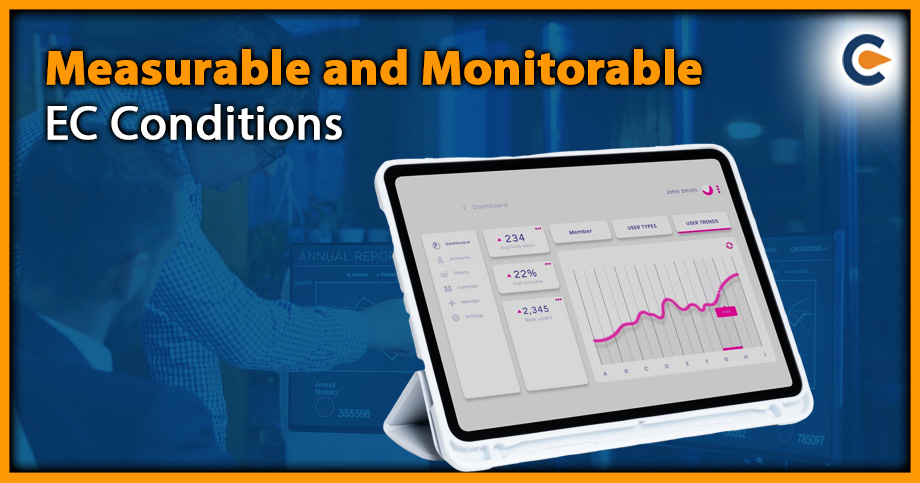Measurable and monitorable EC conditions are measures or requirements imposed by regulatory authorities on projects or activities that can cause significant environmental impacts. These conditions are implemented to ensure that the project or activity is carried out optimally and that the environmental impacts are minimised. Measurable and monitorable EC conditions are those conditions that can be quantified and tracked over time. They are typically conditions that require implementing specific environmental management practices, monitoring key environmental indicators, and reporting results to the regulatory authority. Measurable and monitorable EC conditions ensure that projects and activities are carried out sustainably and that environmental impacts are minimised and effectively managed.
Importance of Measurable and Monitorable EC Conditions in EIA
Importance of monitorable and measurable EC conditions may include:
- Implementation of a specific pollution control technology to reduce emissions to a certain level.
- Monitoring of air, water, or soil quality at specific intervals using standardised methods and reporting the results to the regulatory authority.
- Implementation of a waste management plan that includes segregation, treatment, and disposal of waste in an environmentally safe manner, with reporting of the volume and type of waste generated and disposed of.
- Implementation of a biodiversity conservation plan that includes identifying and protecting critical habitats, species, and ecosystems, with reporting of the status of these features over time.
Guidelines on Measurable and Monitorable EC Conditions
The EC granted to a project or activity under the EIA Notification 2006[1] contains a set of conditions, which are generally segregated as general or specific conditions discussed in detail below.
The General Conditions for both Category A and Category B projects are categorised as under:
- Condition for the pre-construction phase
- Condition for the construction phase
- Condition for post-construction phase
- Conditions for the entire life of the project
Different Phases of Implementation of the Project
Environmental clearance (EC) conditions can be applied at different phases of project implementation, depending on the potential environmental impacts associated with each phase. Generally, the following phases can be considered:
Pre-Construction Phase: During the pre-construction phase, the project proponent must obtain all necessary approvals and clearances from regulatory authorities. This phase may also include activities such as site selection, baseline studies, and impact assessment studies. Measurable and monitorable EC conditions during this phase may include:
- Implementation of environmental management plans to mitigate potential impacts
- Development of a detailed project schedule outlining the timing of activities
- Conducting baseline studies to establish the existing environmental conditions
- Undertaking impact assessment studies to identify potential environmental impacts
- Establishing monitoring and reporting mechanisms to track compliance with EC conditions
Construction Phase: During the construction phase, activities such as site preparation, building, and infrastructure development occur. EC conditions during this phase may include:
- Ensuring compliance with environmental management plans
- Implementing dust suppression measures
- Monitoring and controlling noise levels
- Managing waste generated during construction activities
- Developing and implementing a plan for the conservation of biodiversity and ecosystems in the project area
Post-Construction Phase: During the operation phase, the project is fully operational and is generating outputs. EC conditions during this phase may include:
- Regular monitoring of environmental parameters to ensure compliance with applicable standards.
- Implementation of pollution control measures to minimise impacts on air, water, and soil quality.
- Implementation of a biodiversity conservation plan to minimise impacts on ecosystems and species.
- Developing and implementing an emergency response plan to deal with any accidents or spills that may occur.
- Developing and implementing a stakeholder engagement plan to ensure that local communities are informed about the project’s impacts and mitigation measures.
Decommissioning and closure phase: At the end of the project’s life cycle, activities such as decommissioning and closure occur. EC conditions during this phase may include:
- Developing and implementing a decommissioning and closure plan to ensure that the project site is restored to its pre-project condition.
- Conducting site restoration activities to minimise environmental impacts.
- Implementing a waste management plan to dispose of any residual waste in an environmentally safe manner.
- Developing and implementing a long-term monitoring plan to track the environmental conditions of the site after the closure.
Conclusion
Measurable and monitorable EC conditions are an essential aspect of ensuring that projects are implemented in an environmentally sustainable manner. These conditions are typically imposed by regulatory authorities and can vary depending on the different phases of a project. During the pre-construction phase, EC conditions may include implementing environmental management plans, baseline studies, and impact assessment studies. In the construction phase, EC conditions may consist of ensuring compliance with environmental management plans, controlling noise levels, managing waste, and conserving biodiversity. During the operation phase, EC conditions may include regular monitoring environmental parameters, implementing pollution control measures, and developing emergency response and stakeholder engagement plans. Finally, during the decommissioning and closure phase, EC conditions may include site restoration activities, waste management plans, and long-term monitoring plans. Implementing EC conditions throughout the different phases of a project can minimise the potential environmental impacts associated with the project and ensure that it is carried out sustainably and responsibly.
Also Read:
Environmental Clearance Process In India: A Complete Outlook










